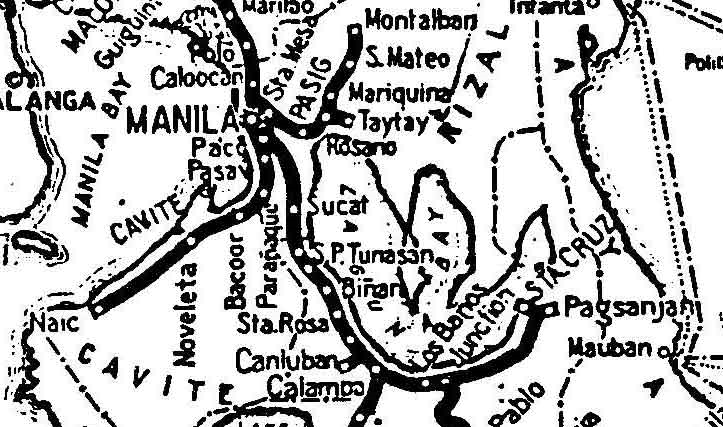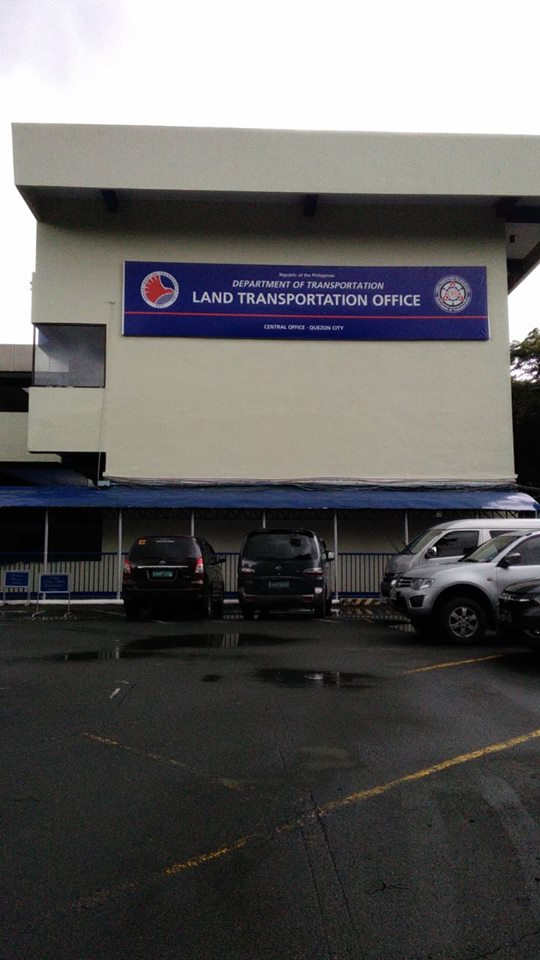|
Tayuman Street
Tayuman Street is a four-lane east-west street in northern Manila, Philippines. It stretches from the former San Lazaro Hippodrome in Santa Cruz to Barrio Pritil in Tondo district. The street is designated as part of Circumferential Road 2. Tayuman begins at an intersection with Lacson Avenue in Santa Cruz district fronting SM City San Lazaro. It crosses Rizal Avenue, passing underneath the Tayuman LRT Station where it continues past the headquarters of the Department of Health into the residential areas of Santa Cruz and Tondo. The street ends at Juan Luna Street near Puregold Tayuman supermarket and extends west towards Manila North Harbor in Tondo as Capulong Street. The street was named after ''tayum'', a type of indigo plant. Route description Tayuman Street is designated a national secondary road, wholly with the route number N140. The road has four lanes, with two per direction, are mostly lined with side streets and local businesses. Numerous establishments li ... [...More Info...] [...Related Items...] OR: [Wikipedia] [Google] [Baidu] |
Manila Cathedral School
Manila Cathedral School is a basic education institution in Tondo, Manila. History During the pre-war years, the Manila Cathedral School of Intramuros had a famous "Tiples" all boys choir trained in sacred music. These boys came from different provinces and enjoyed free board and scholarship at the Colegio de Tiples. After the 1945 liberation, the Manila Cathedral and the school for the Tiples were left into runs but the Archbishop of Manila, Michael J. O'Doherty was not disheartened. Foremost in his mind was the education of these young boys. The school was transferred to the present site of Manila Cathedral School in Tayuman, Tondo, known before as the "Instituto de Mujeres" co-owned by Doña Rosa Sevilla's family and the Archdiocese of Manila. When the Instituto de Mujeres decided to transfer in Governor Forbes St., Manila, the Archdiocese of Manila purchased the entire lot thus became the sole owner. For the time, this area served to house different religious congregati ... [...More Info...] [...Related Items...] OR: [Wikipedia] [Google] [Baidu] |
N140 (Philippines)
N14 may refer to: Roads * N14 road (Belgium), a List of National Roads in Belgium, a national road in Belgium * Route nationale 14, in France * N14 road (Ireland) * N14 expressway (Netherlands) * N14 (South Africa) * A14 motorway (Switzerland) * Nebraska Highway 14, in the United States Vehicles * LNER Class N14, a British steam locomotive * Nissan Pulsar (N14), a Japanese automobile * , a submarine of the Royal Navy Other uses * N14 (Long Island bus) * BMW N14, an automobile engine * Flying W Airport in Burlington County, New Jersey, United States * Nitrogen-14, an isotope of nitrogen * N14, a postcode district in the N postcode area See also * 14N (other) {{Letter-NumberCombDisambig ... [...More Info...] [...Related Items...] OR: [Wikipedia] [Google] [Baidu] |
Philippine Daily Inquirer
The ''Philippine Daily Inquirer'' (''PDI''), or simply the ''Inquirer'', is an English-language newspaper in the Philippines. Founded in 1985, it is often regarded as the Philippines' newspaper of record. The newspaper is the most awarded broadsheet in the Philippines and the multimedia group, called The Inquirer Group, reaches 54 million people across several platforms. History The ''Philippine Daily Inquirer'' was founded on December 9, 1985, by publisher Eugenia Apóstol, columnist Max Solivén, together with Betty Go-Belmonte during the last days of the regime of President Ferdinand Marcos, becoming one of the first private newspapers to be established under the Marcos regime. The ''Inquirer'' succeeded the weekly ''Philippine Inquirer'', created in 1985 by Apostol to cover the trial of 25 soldiers accused of complicity in the assassination of opposition leader Ninoy Aquino at Manila International Airport on August 21, 1983. Apostol also published the '' Mr. & Ms. Spec ... [...More Info...] [...Related Items...] OR: [Wikipedia] [Google] [Baidu] |
Major Roads In Manila
Major (commandant in certain jurisdictions) is a military rank of commissioned officer status, with corresponding ranks existing in many military forces throughout the world. When used unhyphenated and in conjunction with no other indicators, major is one rank above captain, and one rank below lieutenant colonel. It is considered the most junior of the field officer ranks. Background Majors are typically assigned as specialised executive or operations officers for battalion-sized units of 300 to 1,200 soldiers while in some nations, like Germany, majors are often in command of a company. When used in hyphenated or combined fashion, the term can also imply seniority at other levels of rank, including ''general-major'' or ''major general'', denoting a low-level general officer, and ''sergeant major'', denoting the most senior non-commissioned officer (NCO) of a military unit. The term ''major'' can also be used with a hyphen to denote the leader of a military band such ... [...More Info...] [...Related Items...] OR: [Wikipedia] [Google] [Baidu] |
PNR Metro South Commuter Line
The PNR Metro Commuter Line is a commuter rail line operated by the Philippine National Railways. It was first inaugurated as the Metro Manila Commuter Service in 1970, and originally served the North Main Line and the South Main Lines, as well as the defunct Carmona and Guadalupe branch lines. Since then, it adopted several names such as Metrotrak and Metrotren, before adopting its present name in the late 2000s. The line is also nicknamed the ''Orange Line'' due to its designation in the 1970s. The present line has 36 stations serving Metro Manila and Laguna. It is divided into two sections which meet in Tutuban station in Tondo, Manila. The Metro North Commuter section runs from Tutuban to Governor Pascual station in Malabon and is colored light green in the system map of PNR. On the other hand, the Metro South Commuter section which runs from Tutuban to IRRI station in Los Baños, Laguna and is colored orange. Some stations connect to LRT Lines 1 and 2, and MRT Line 3. ... [...More Info...] [...Related Items...] OR: [Wikipedia] [Google] [Baidu] |
TESDA
The Technical Education and Skills Development Authority (TESDA ; fil, Pangasiwaan sa Edukasyong Teknikal at Pagpapaunlad ng Kasanayan) serves as the Philippines' Technical Vocational Education and Training (TVET) authority. As a government agency, TESDA is tasked to both manage and supervise the Philippines' Technical Education and Skills Development (TESD). Its goals are to develop the Filipino workforce with "world-class competence and positive work values" and to provide quality technical-educational and skills development through its direction, policies, and programs.“Vision, Mission, Value and Quality Statement.” 2017. Technical Education and Skills Development Authority - TESDA. TESDA. Accessed June 26. http://www.tesda.gov.ph/About/TESDA/11. History Predecessor Technical-Vocational Education was first introduced to the Philippines through the enactment of Commonwealth Act No. 3377, or the “Vocational Act of 1927.” On June 3, 1938, the National Assembly of ... [...More Info...] [...Related Items...] OR: [Wikipedia] [Google] [Baidu] |
Land Transportation Office
The Land Transportation Office ( fil, Tanggapan ng Transportasyong-Lupa; LTO) is an agency of the Philippine government under the Department of Transportation responsible for all land transportation in the Philippines. Functions of the LTO include the inspection and registration of motor vehicles, issuance of licenses and permits, enforcement of land transportation rules and regulations, and adjudication of traffic cases. Its primary mission is to rationalize land transportation services and facilities, and effectively implement various transportation laws, rules, and regulations. It believes that it is the responsibility of those involved in the public service to be more vigilant in their part in the over-all development scheme of national leadership. Hence, the promotion of safety and comfort in land travel is one of LTO's continuing commitments. It aims to be a frontline government agency that showcases fast and efficient public service for a progressive land transport secto ... [...More Info...] [...Related Items...] OR: [Wikipedia] [Google] [Baidu] |
Department Of Health
A health department or health ministry is a part of government which focuses on issues related to the general health of the citizenry. Subnational entities, such as states, counties and cities, often also operate a health department of their own. Health departments perform food inspections and other health related inspections (the person who performs this job is often called a public health inspector), vaccination programs, free STD and HIV tests, tobacco enforcement and cessation programs, and other medical assistance programs. Health departments also compile statistics about health issues within their area. The role of a health department may vary from one country to the other, but their primary objective is always the same; safeguarding and promoting health. In 1986, several of the world's national health departments met to establish an international guideline by which health departments operate. The meeting was in Ottawa, Ontario, Canada, and hence the guidelines established ... [...More Info...] [...Related Items...] OR: [Wikipedia] [Google] [Baidu] |
Espiritu Santo Parochial School
Espiritu Santo Parochial School is a basic education institution in Santa Cruz, Manila, with a core of faculty members and staff. HistoryRevised Student Handbook, La Limarisa Printing Press, Manila: 2015. Espiritu Santo Parochial School (ESPS) was formally established in 1947 by Rev. Fr. William J. Duschak, SVD (School Director, 1947–1951), former Vicar Apostolic of Calapan, Oriental Mindoro. Not long after, the school, then managed by the priests of the Society of the Divine Word (SVD), was officially recognized by the government to offer the complete Elementary course from Grade I to Grade VII courses in 1948 and the Kindergarten course in 1962. Serving after Fr. Duschak was Fr. Matias Buendgen, SVD (School Director, 1951–1958) who was credited for the construction of the Main Building, which to this day, stands at the corner of Rizal Avenue and Tayuman Street. Blessed by Archbishop Rufino J. Santos in November 1955, the said structure was then described as a “beautiful ... [...More Info...] [...Related Items...] OR: [Wikipedia] [Google] [Baidu] |
Cavite
Cavite, officially the Province of Cavite ( tl, Lalawigan ng Kabite; Chavacano: ''Provincia de Cavite''), is a province in the Philippines located in the Calabarzon region in Luzon. Located on the southern shores of Manila Bay and southwest of Manila, it is one of the most industrialized and fastest-growing provinces in the Philippines. As of 2020, it has a population of 4,344,829, making it the most populated province in the country if the independent cities of Cebu are excluded from Cebu's population figure. The ''de facto'' capital and seat of the government of the province is Trece Martires, although Imus is the official (''de jure'') capital while the City of Dasmariñas is the largest city in the province. For over 300 years, the province played an important role in both the country's colonial past and eventual fight for independence, earning it the title "Historical Capital of the Philippines". It became the cradle of the Philippine Revolution, which led to the r ... [...More Info...] [...Related Items...] OR: [Wikipedia] [Google] [Baidu] |
Carmona, Cavite
Carmona, officially the Municipality of Carmona ( tgl, Bayan ng Carmona), is a 1st class municipality located in the province of Cavite, Philippines. According to the 2020 census, it has a population of 106,256 people. Etymology When Silang became a town and Latag was annexed as a part of it since 1595. Latag gradually developed into a community whose residents struggled hard to make it a town. Their burning desires were filled with hopes and fulfillment in 1856 when their move for the conversion of Latag into a town was spearheaded by a leader named Tiburcio Purificacion. Finally, by virtue of a decree issued on February 20, 1857, by the King of Spain through Governor General Fernando de Norzagaray, Latag became a separate municipality with the name it bears today: Carmona, named after the town of Carmona in the province of Seville, Spain. Yet until now, it had not been known where the name originated. History Carmona was just a part of the big town of Silang. This is not ... [...More Info...] [...Related Items...] OR: [Wikipedia] [Google] [Baidu] |



